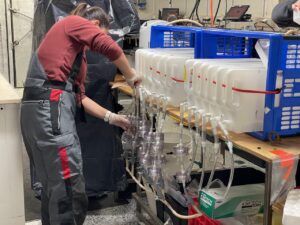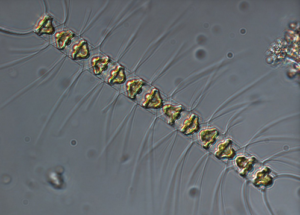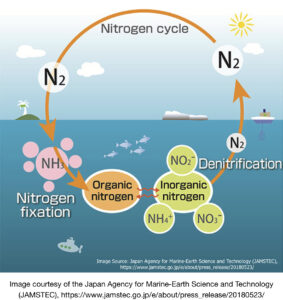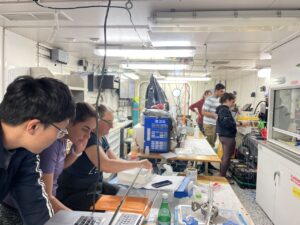Friday, June 02, 2023 – North Pacific Ocean (Latitude: 42.50.802 N, Longitude: 124.40.196W)
You Are What You Eat –

Raquel Flynn (University of Cape Town, South Africa), Yeongsun Ryu (Princeton), and Julie Granger (University of Connecticut) are researching one of the key components of the biogeochemical cycle (Figure 12, Day 4): Nitrogen. Their research will also measure how the phytoplankton are using Nitrogen during an upwelling cycle. (Figure 4, Day 2) The Nitrogen Team is investigating the nitrogen uptake of various sizes of phytoplankton: 0.4 – 5um (Cyanobacteria and other <5um microbes), 5 – 10um (Single-celled Diatoms), and larger than 10um (Chains of Diatoms such as Chaetoceros, Figure 19). “The filtration system we are using is designed to separate the three sizes before we prepare them for further analysis in the lab,” explained Julie Granger. “A Flow cytometer will sort and count the different microbes and a Mass Spectrometer will identify which form of nitrogen the different microbes are using: Nitrates (NO3–) or Ammonia (NH4+).”



